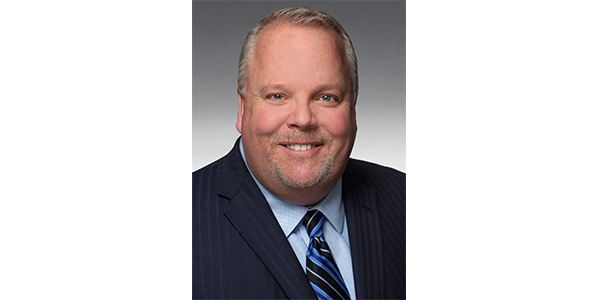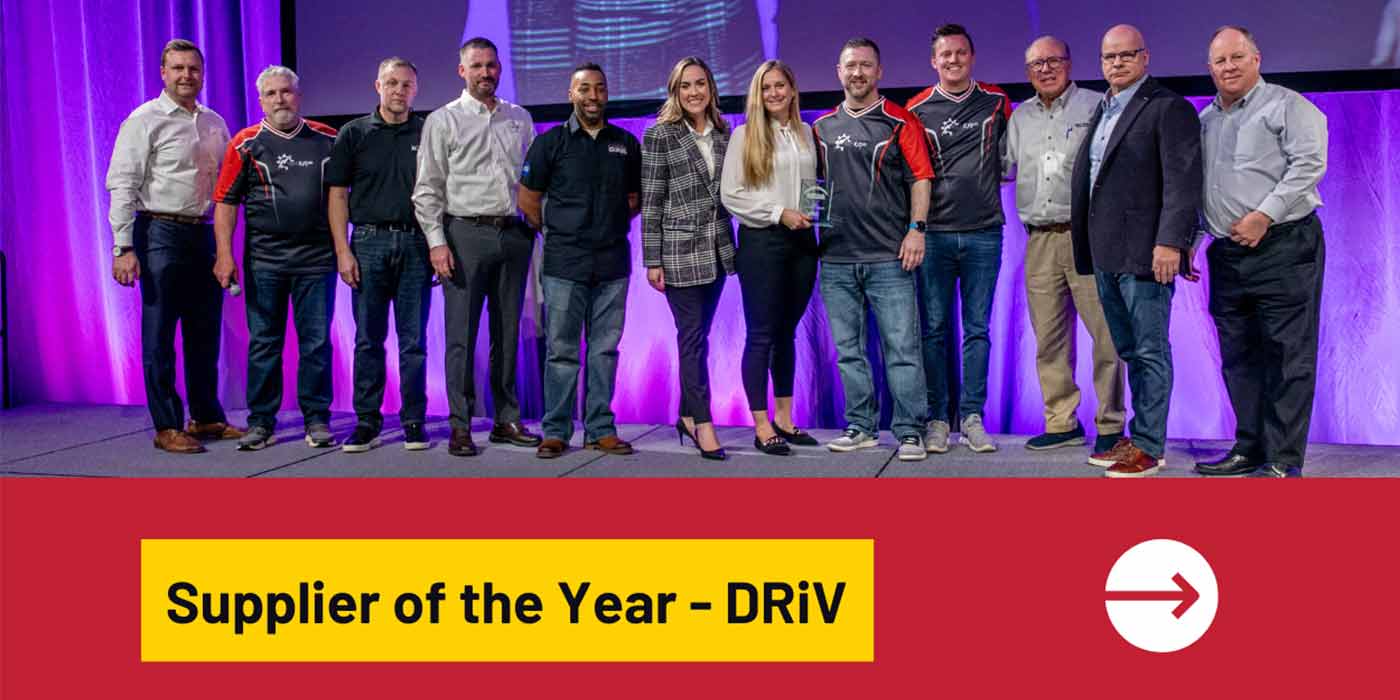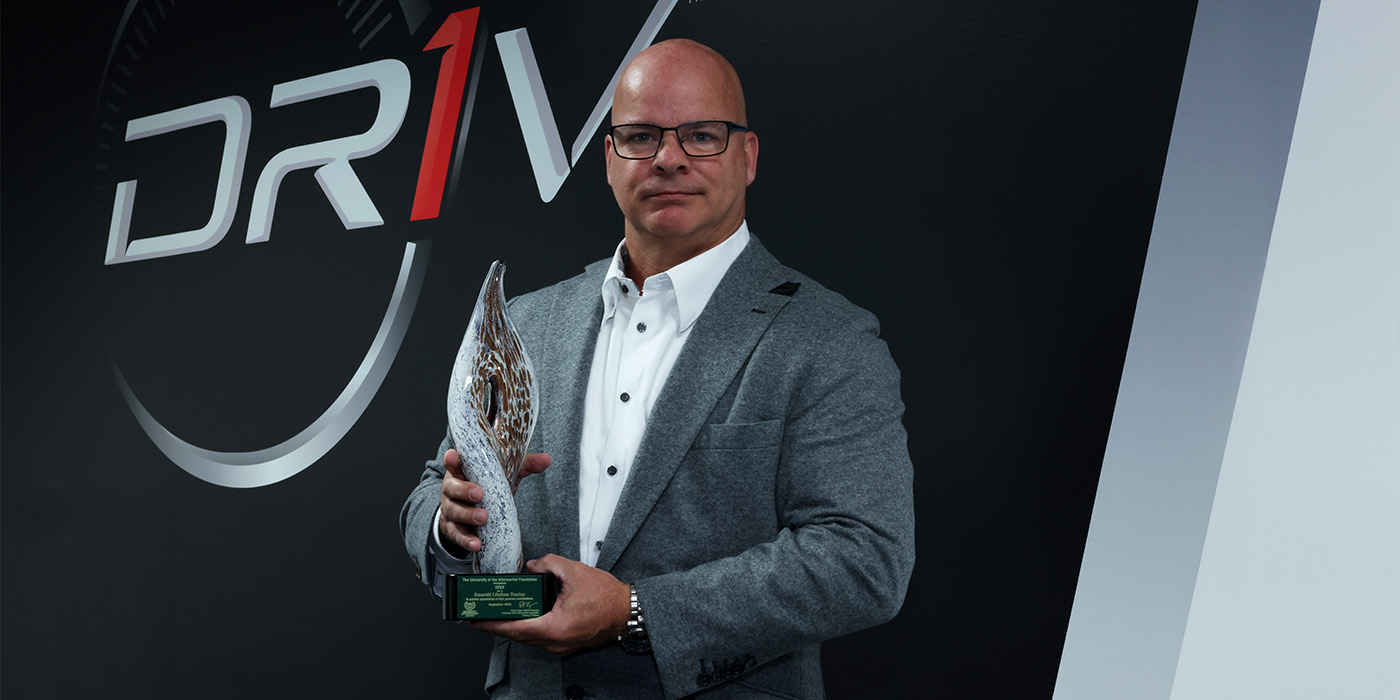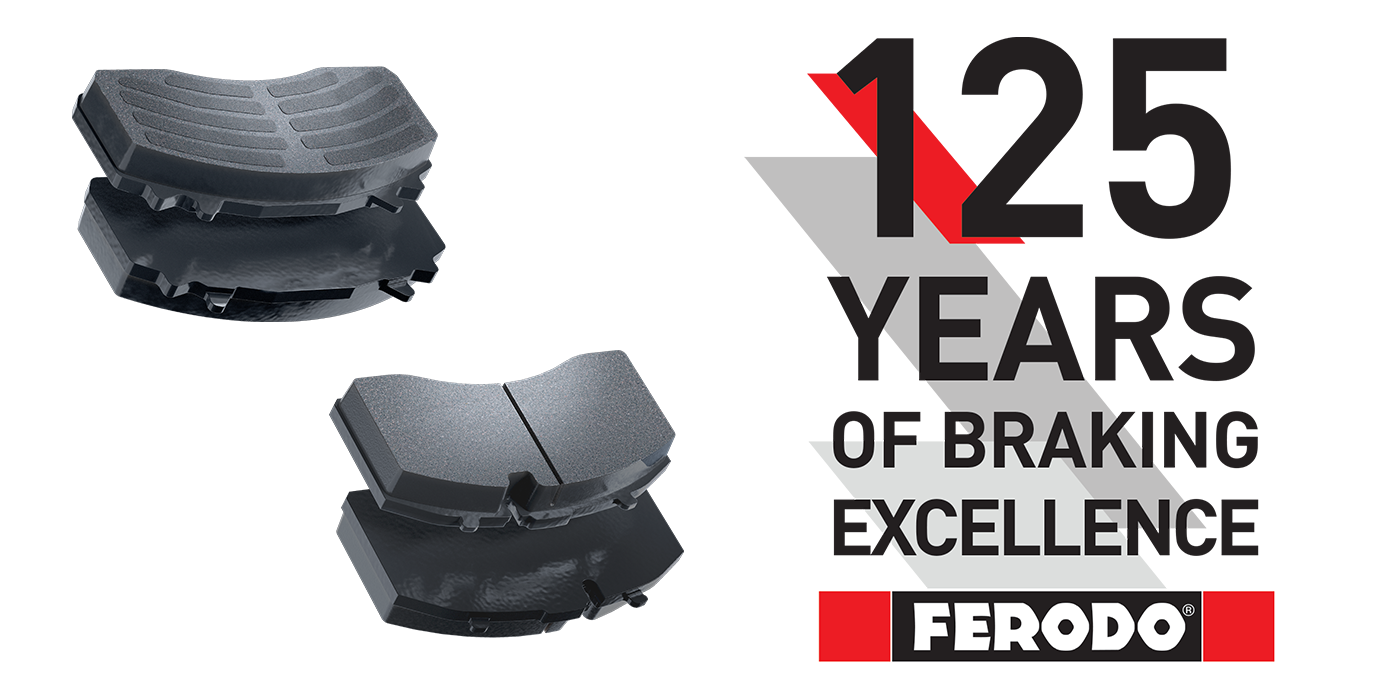
Having marked its one-year anniversary, DRiV, the new spin-off company formed from the merger of Tenneco Inc. and Federal-Mogul Motorparts, made its official debut at AAPEX 2019 in Las Vegas. While at the show, we sat down with DRiV CEO and future Chairman Brian Kesseler and his senior leadership team to talk about the latest changes with the spinoff and next steps for the business.
AMN: Can you bring us up to speed now that you have the two segments under the DRiV umbrella?
Brian Kesseler (BK): When we were here last year, we had closed on the transaction Oct. 1. It was kind of a sprint to try and get the team together as much as possible. Still coming to work as the Federal-Mogul Motorparts side and the Ride Performance side with Monroe and Walker. That was a little bit of a hodge podge as we put it together. [We were] still referring to ourselves as the Aftermarket Ride Performance company, because we didn’t have any better ideas at the time. Plus, little did I know what it took to try and find a name.
But, here we are a year later. We put our name out there as DRiV in February. I think the team has hit its stride early, and we are really starting to get some good traction on a lot of different fronts. We knew in putting all the brands together we had to treat it differently than either company had treated it in the past. Federal-Mogul probably was a bit better at the branding side of it and had started to make some investments, but what we are putting together and what we plan to put together even further down the road for the brands are going to be a big part of what we bring beyond just our parts.
There are several challenges in the industry that we think we can position ourselves to help our customers with and bring more value than just the part we put in a box. We have 30 brands, 15 of them now are more than 100 years old, so, pretty well-recognized. There are other services building out of the Garage Gurus platform that started underneath F-M that have started to get some really good traction. We had our largest month of training in October, with 1,800 technicians and front counter people coming in.
AMN: You mentioned solutions for your customers. Who do you consider your customers to be?
BK: Our customers are the people who deliver the parts to the installers, to the technicians. Distribution, but in distribution, I think the lines in distribution are starting to get real blurry. Retailers are just a distributor in another form. They’re getting product to the installer, who happens to be the consumer, but as that trend of do-it-yourselfers continues to drift away with demographics and technology all playing a part in that, you can see all the big players pivoting to use their real estate assets and proximity to installers to try and differentiate themselves and serve those installers. I believe we’re going to see in the industry three major changes. One of those is going to be consolidation. You can see it happening already here in North America. Europe, you can see it and in China, which is going to have the largest growth in six- to 13-year-old vehicles in operation. You can see that starting to consolidate rapidly. Every time we go over there it’s an eye-opening experience.
AMN: Do you see the ultimate consumers as the professional technician?
BK: I think a little bit of both. I mean, ideally, you’d love to have the recognition of the consumer level where they have the pull, but I think what’s most important is the technician has confidence in the product and the promise that the product brings. And, you bring more value to that technician by training.
AMN: What are some of the challenges you’re facing as you return to market under the DRiV umbrella?
BK: I think the challenges aren’t so much between us and our customers. I think it’s more industry challenges. In my mind, there’s three of them. One is, especially here in the North America market, how are you going to get enough trained technicians, especially with technology changing as fast as it is. We’ve got to do our part in making sure we can help our customers train their customers.
The second one, I think, is a big issue and that is the overall complexity in the product categories. I mean, we run seven categories and we’ve got underneath those about 35 to 37 product lines that line up underneath there and that’s just a portion of what a full line distributor has.
We look at how many SKUs are sitting in certain categories and it’s just mind boggling. Actually, it’s kind of silly when you step back. We’ve actually employed a new way of asking our team to look at where is the value being created both from a customer type and customer and a SKU proliferation. You hear the old adage, if you’re going to be a player, you got to have 90-95% coverage in VIO. Taken to its extreme, it’s a value destroyer. Having some discipline in that to help, it’s a self-help story, too, but [we want to] help our customers manage that a little bit differently, too.
This is where I think the real challenge in the industry is, when I talk about consolidation. It’s not because necessarily that all the players can’t be good someday, but if you take a look at the amount of cash that’s wrapped up in duplicate supply chains and you step to any big city corner and you can see four or all five of the big players in that radius in turning around, you recognize that they’ve got all that complexity in every one duplicated five times.
And that’s just not the most efficient use of cash. So, what we’re trying to get in the conversations with our more strategy-oriented customers is, why do you want to handle all that complexity? With those C- and D-level parts, there’s a better way. We know there’s a better way, but, boy, it’s going to require the whole chain to think differently.
AMN: DRiV describes itself as a $6 billion Start-up. Can you talk a little bit about having a century of heritage in brands and also having a start-up mentality?
BK: You can’t let century worth of thinking set your path for the future. This is a completely different world that we’re going to be operating in from a speed perspective, and just from an information sharing perspective. When we’re talking to our team about being a $6 billion start-up, it’s really in the form of setting up our structure and our thinking to be nimbler, more agile, quicker to getting the solution with the customer, to the customer. That’s really the start-up mentality.
Really trying to break down what can creep in to big companies, right? You get bit by “company-it is” and everything’s got to be approved by three or four layers. We’ve actually just kicked into a different line structure where it’s by category, by region.
We have one P&L owner, who is responsible for the growth of that category in that region and working with the account leads. The account leads can’t possibly know seven different categories and 35 different product lines and all of the good stuff that’s sitting there or be able to put it together in such a way that it meets what the customer needs, was trying to accomplish. So, by having these business line leaders in a region on each category, they’re partnering directly, so we can get answers faster. They’ve got kind of pillar-to-post responsibility from purchasing, manufacturing, engineering and pricing. They’ll be responsible for the cataloging to make sure that their best position is a better position than any of our competition to grow.
AMN: Do you plan on leveraging the company’s OE expertise into the aftermarket product development?
BK: Yes. The one thing that we didn’t have in the portfolio when we talked it last year was the Öhlins Racing team. Öhlins Racing comes with a 25/30-year heritage that really started on the racetrack. Our partnership with them goes back 20 years. They’re the source, the engineering brains behind the electronic valve for our Intelligent Suspension product line. Kent, really started that whole company off in Moto G.P. They do suspension work for more than a handful of F1 racing teams. They do suspension work for Moto G.P. teams, most of them. So, what we have, if you look at several of our other brands you trace it back to its heritage, it goes all the way back to racing. You look at the technologies that are being put on the vehicles today, you can trace many of those back to hitting the racetrack soon as three years ago, sometimes it’s 10 years ago. That knowledge and essentially that’s our R&D for the advanced suspension technologies that are going into vehicles today, and also the ones for tomorrow.
Turning problems into solutions and getting it from idea to production faster than I’ve ever seen is not a bad business.
There’s kind of three different focuses you can have, not that you would ever not have them in everything you do, but you can be an operationally excellent company, you can be a technology driven company, like the Apples of the world, or you can be a solutions provider. We stepped back in the senior leadership team, asked when we were at our best, what did we do? It was really around providing those solutions for those customers better than anybody else could. That’s really the DNA that we’re weaving into DRiV.
We’ve got kind of the best of both worlds. We can bring new product to that aftermarket, especially maybe on the premium performance side and get it pulled into the OE, or we have a great technologies on the OE that get pulled into the aftermarket. I think having both groups is truly a 1+1=4 opportunity for us.
AMN: A lot has evolved in this past year as you were setting up the new company, especially on the world stage, economically speaking, with China tariffs, Brexit, NAFTA etc. Has any of that influenced your business plan over the past year?
BK: Yes, I think the one thing that’s going to continue to be true, I believe, is the geo-political arena where tariffs are used as deterrents or encouragement, however you want to think about it. Our investment in China is probably only going to be for China. I don’t think China is going to be a place for a lot of different parts of businesses, not just the aftermarket, that you can rely on for bringing low-cost product in from just that. I think, we’re looking at other areas to do that. Now, we’ve got plenty of great growth opportunities in China, so, it’s not like we’re not going to be investing there, but we’ll be investing there for that market, both on our OE side and our aftermarket side. That’s maybe a little different, but there’s some other great areas for leveraging better cost solutions. India’s not bad. But as soon as you hear about it, everybody’s already there. I think one of the strengths that Tenneco’s always had, where it made sense, was that we make where we sell. If you’re really, really good in the markets that you’re selling, you can take a lot of those variables of out of the mix.
AMN: Under the headline of consolidation, are there any plans to acquire or divest?
BK: I think we do a little of both. I mean, you saw early on, we divested the wipers line. As we looked at it and we looked at our position, that was a product line or a product category that was both OE and aftermarket. We had sales and revenue in both. As we looked at it, we were probably mispositioned, especially on the OE side. The way the OEs buy, we didn’t have the whole set. We had basically the blades and the arms. From a technology standpoint as we look out four years, there’s some intellectual property that drifts off of that here inside the strategic plan horizon. You can’t do everything. Sometimes the most powerful choices you can make in setting your strategies focus on what you’re not going to do.
Every product group and every product line have to stand on its own. It’s one of the reasons why we’ve set this structure up and it’s great with the portfolio that we have now. We’re not over weighted or over indexed to any particular product category or product line or customer, which in the OE world, that’s tough to do. But with our aftermarket mix, I think we’ve got a little bit more strategic flexibility and if we see that a product line doesn’t have the growth characteristics that we like or we’re not positioned very well in a market, you’ll see us scale back some of the product category offers in some regions, because, frankly, we haven’t earned the right on some of them. We got four big core product lines: our shock and strut line, our braking line, our steering suspension Moog line here and our sealing line is really good here, but those go on to nine to 15-year-old vehicles.
AMN: Do you foresee Fel-Pro as a growth opportunity?
BK: We just celebrated 100 years last year on that brand. If I could take the culture off the team, members on the floor, and duplicate that in all 60 locations around the world, our job would be really easy. That’s a solution that they brought to market, and kind of built their whole DNA around what to expect out of that. We got some reinvestment we need to do back in our brands. You’re going to see us step that up pretty dramatically over the next couple of years.
AMN: Anything else you would like AMN readers to know?
BK: I think what you’ll hear us start to hit on more and more, especially as we talk about our business model, priority markets and customers, is that we match up with a certain set of customers a little better than others. We’re not going to be chasing three quotes in a cloud of dust.
You’ll hear us stressing really hard a high velocity supply chain mentality. It really goes back to this complexity. How can we move parts more efficiently looking at the entire chain rather than each individual piece of it?













